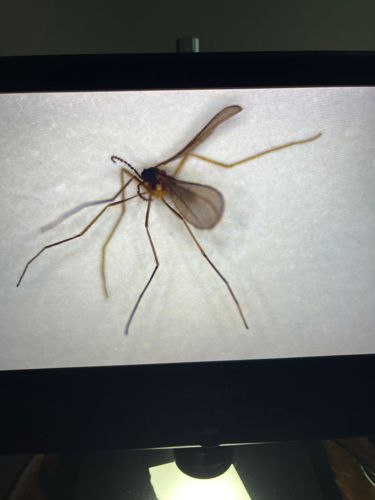Fungus Gnat
Scientific Name: Sciaridae (most common), Mycetophilidae
Order & Family: Order: Diptera, Families: Sciaridae, Mycetophilidae
Size: 2-8 mm (adults)

Natural Habitat
Typically found in damp, humid environments rich in decaying organic matter, such as forests, greenhouses, and potted plants indoors. Larvae live in soil.
Diet & Feeding
Adult fungus gnats typically do not feed on solid food and may consume nectar or other liquids. Larvae feed on fungi, decaying plant matter, and sometimes plant roots.
Behavior Patterns
Adults are weak flyers and are often seen near the soil surface of potted plants, flying in short, erratic bursts. They are attracted to light and moisture. Larvae are found in the top layers of soil and feed there. The typical life cycle is egg, larva, pupa, adult, completed in about 3-4 weeks depending on conditions.
Risks & Benefits
Potential risks include damage to plant roots by larvae, especially in seedlings and young plants, which can lead to wilting and plant death. They can also be a nuisance indoors due to their presence. Benefits are minimal, though their larval feeding on decaying matter contributes to nutrient cycling.
Identified on: 10/16/2025